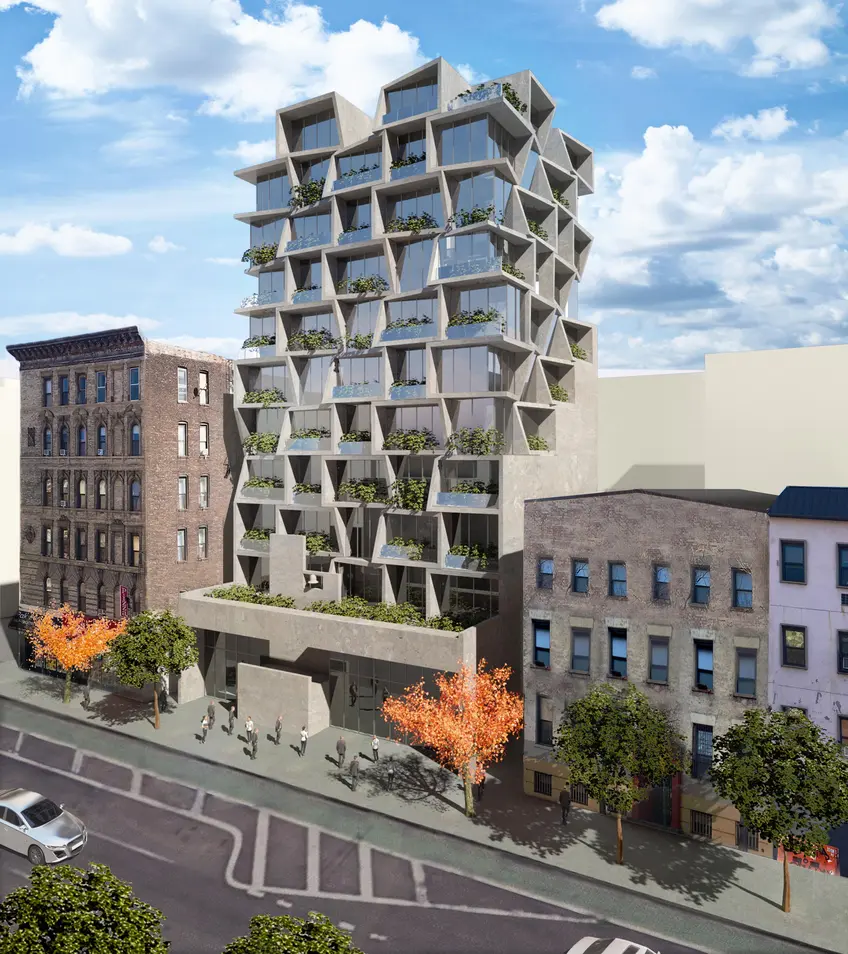 48 Second Avenue. Credit: JBA Collective
48 Second Avenue. Credit: JBA Collective
Church-to-condo conversions, an increasingly common phenomenon that repurposes shuttered houses of worship into housing for the affluent, conjures mental images of Gothic-styled foyer entryways, hipped nave living room lofts, and pointed-arch bedroom windows, whether in Cobble Hill, Williamsburg, or Bushwick. However, an unusually-styled,shuttered church at 48 Second Avenue is about to transform into an equally-unusual apartment building. Architecture firm JBA Collective not only incorporates key elements of the original structure into the base of the new high-rise, but also draws inspiration from its mid-century Brutalist aesthetic to carve a funky, Neo-Brutalist tower that will delightfully jazz up the East Village skyline.
The original church rose at the site in 1832. Known as the Second Avenue Presbyterian Church, the edifice was a masterpiece of Greek Revival architecture designed by a partnership of Alexander Jackson Davis, known for landmarks such as the 1842 Federal Hall on Wall Street, and architects J. H. Dakin and James Gallier. The church faced the avenue with a classical column portico and pediment gable, and graced the skyline with a telescoping, domed bell tower. The structure, known as the Church of the Nativity since 1842, outlived the Lower East Side’s postwar wave of demolitions and construction of towers-in-a-park crisis, yet perished on the eve of the city’s fiscal crisis, meeting the wrecking ball in 1970.
In this article:
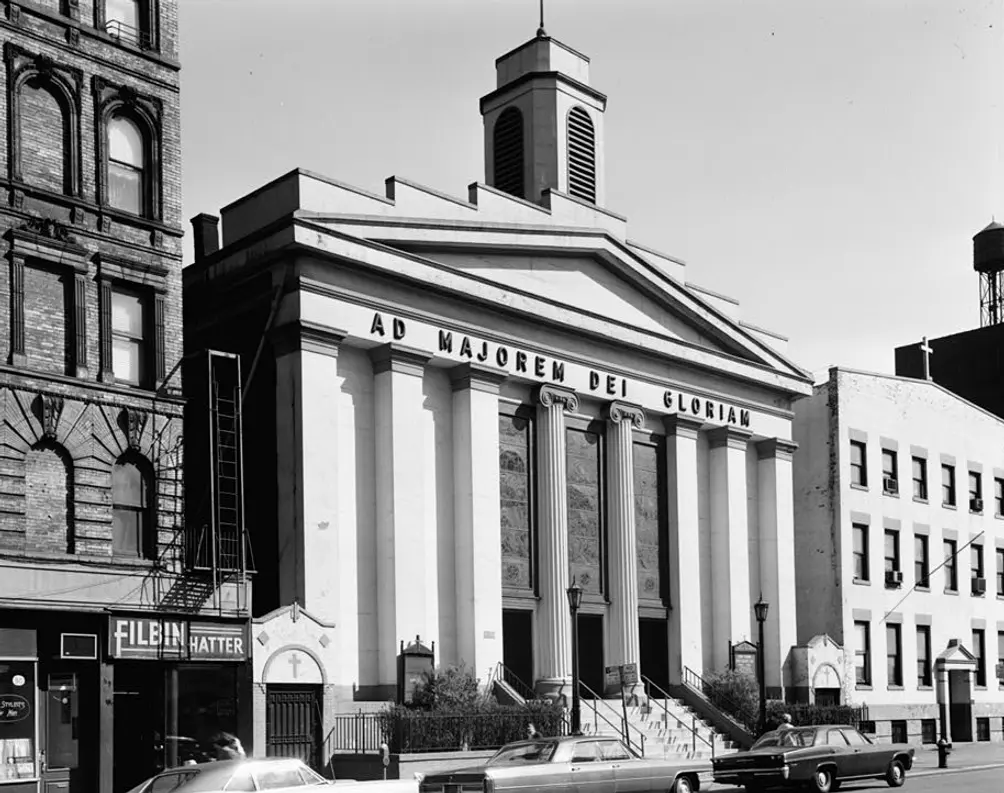 The original Church of the Nativity on Second Avenue. Credit: HABS
The original Church of the Nativity on Second Avenue. Credit: HABS
The second church was much more modest in scale, yet featured a strikingly unique design that made it stand out despite its low-slung, single-story stature. Genovese and Maddalene, a New Jersey-based architect duo that specialized in church design, fashionedthe replacement in Brutalist style, a modernist movement named after “beton brut,” French for “raw concrete.” The single-story facade consisted of a plain niche, where a series of staggered brick and concrete slabs seemed to invite parishioners to pass beneath a prominent concrete beam. The design swapped a traditional belfry for a notched concrete slab that projected through the flat roof and hoisted, side by side, a minimalist cross and a small bell. Despite, or perhaps because of, its stark simplicity and clear design direction, the building effectively channeled a spiritual sensation of spiritualism while still living up to the postmodern zeitgeist.
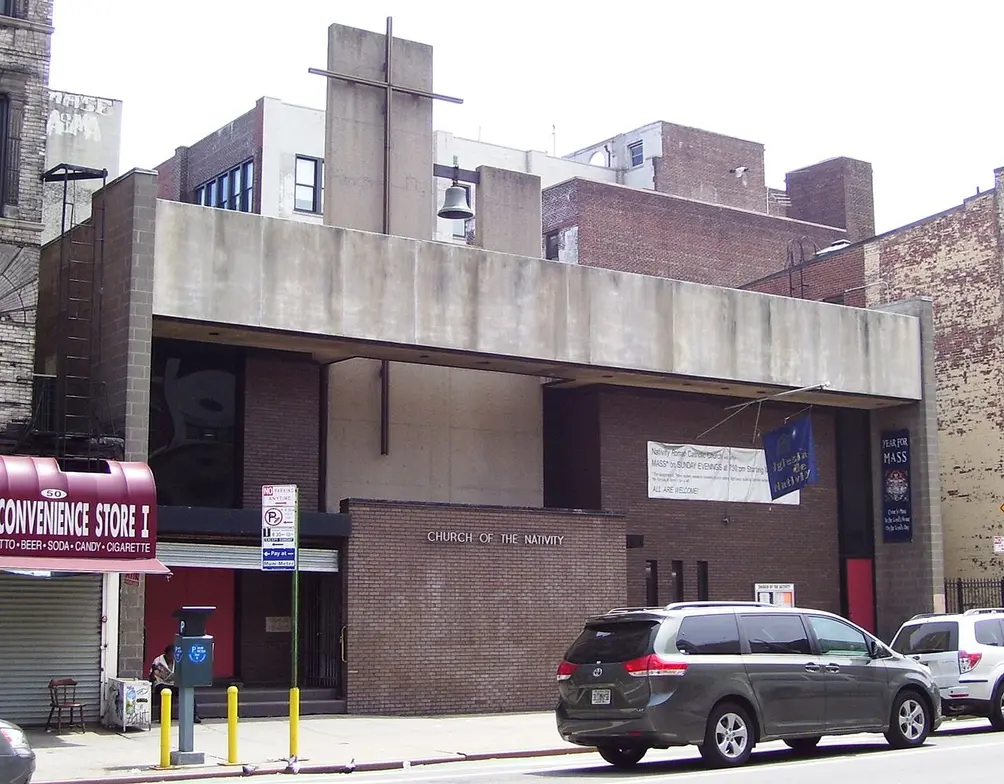 The second Church of the Nativity on Second Avenue. Credit: Beyond My Ken, 2011, via Wikipedia
The second Church of the Nativity on Second Avenue. Credit: Beyond My Ken, 2011, via Wikipedia
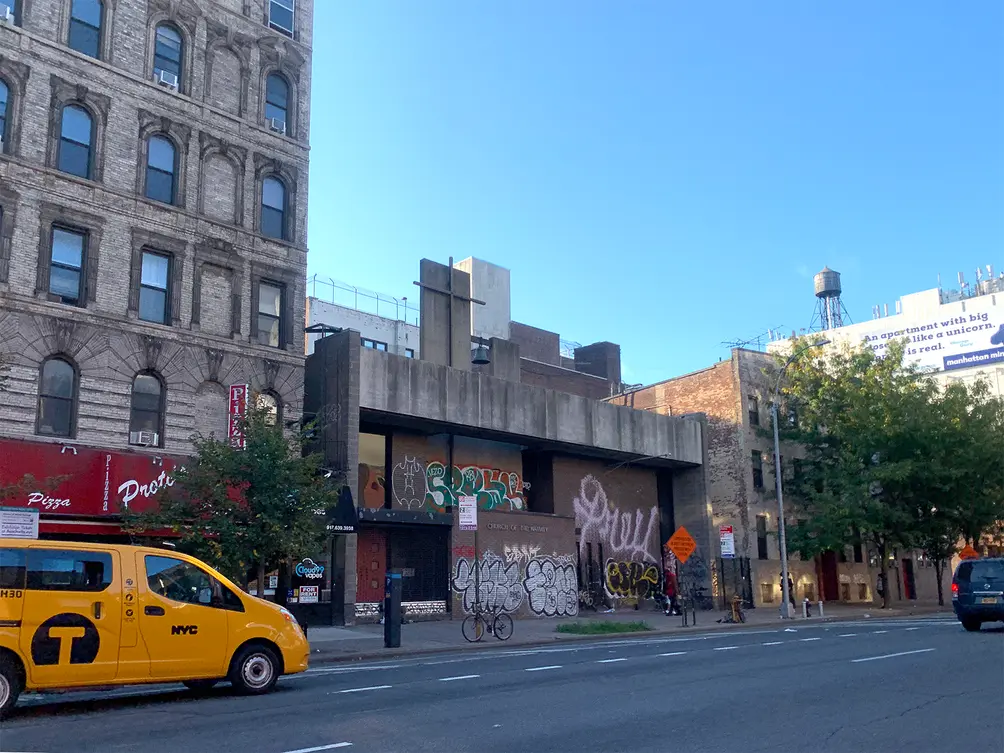 The site as of early October 2019
The site as of early October 2019
The church came under threat of destruction, the second in its centuries-long history, when the city’s Roman Catholic diocese shuttered the church in 2015 as part of a broad move to consolidate its parishes. Thankfully, architecture aficionados need not fret, since the design by the JBA Collective preserves most of the church’s distinctive facade, including the concrete slab belfry and its bell (though the cross will apparently be dismounted, to signify the building’s conversion to non-religious use).
The church’s Brutalist aesthetic takes on a funkier, 21st-century appearance in the robust, expressive high-rise. Floor-to-ceiling windows nestle within zig-zagging concrete slabs that create a unique experience at every apartment and a one-of-a-kind presence on the Lower East Side skyline. The building’s design stays true to the freewheeling spirit of vibrant Lower East Side, known for combining a historical legacy with a culture of expressive artists not afraid to let their creative work take flights of whimsy. Numerous art galleries, hole-in-the-wall restaurants, and poppin’ nightlife joints sit within steps of the avant-garde tower.
48 Second Avenue will rise a block north of a ten-story condo at 32 East 1st Street, where a grid of crisply-styled concrete girders holds 32 condos with floor-to-ceiling windows and terraces at the seventh floor setback and the roof.
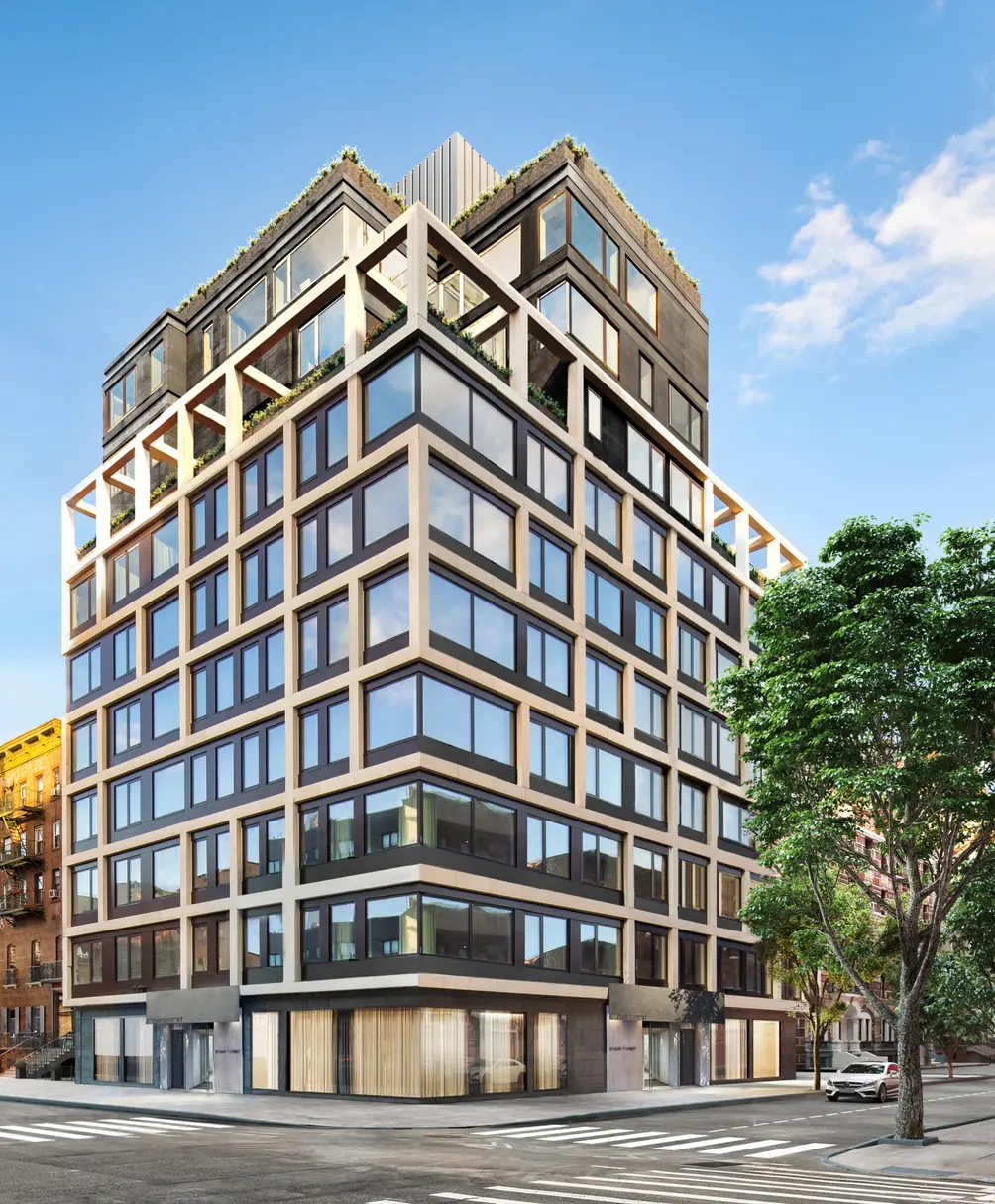 New condos soon to open at 32 East 1st Street (Douglas Elliman)
New condos soon to open at 32 East 1st Street (Douglas Elliman)
Would you like to tour any of these properties?



 6sqft delivers the latest on real estate, architecture, and design, straight from New York City.
6sqft delivers the latest on real estate, architecture, and design, straight from New York City.
